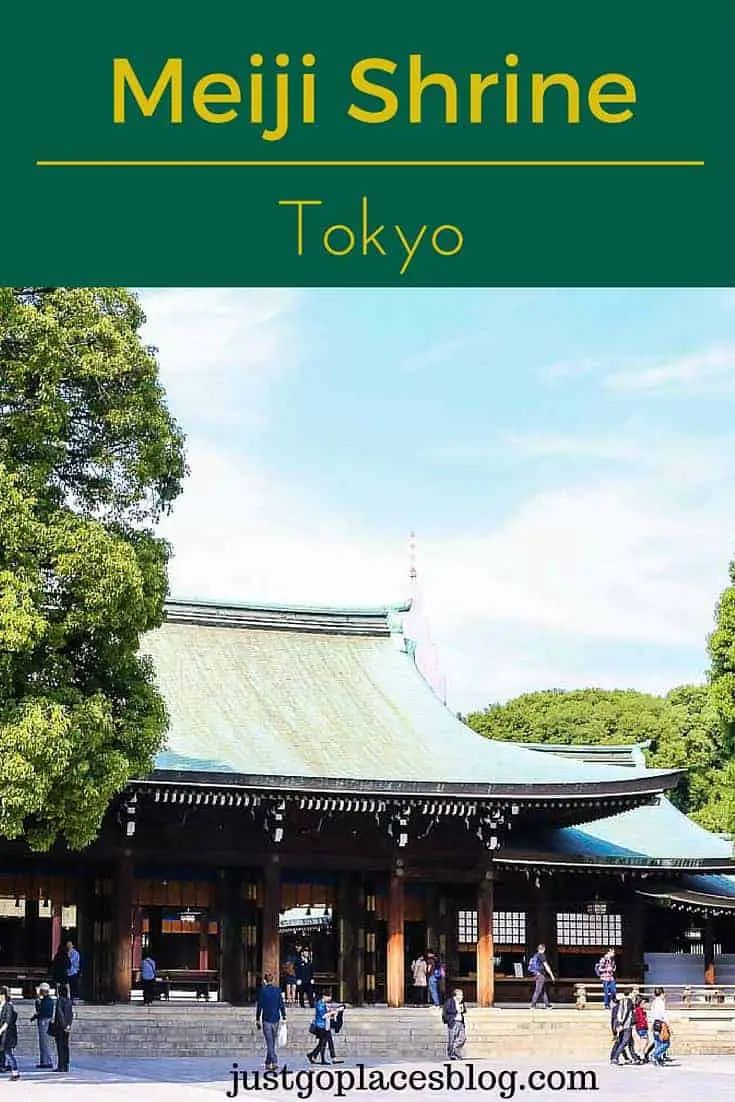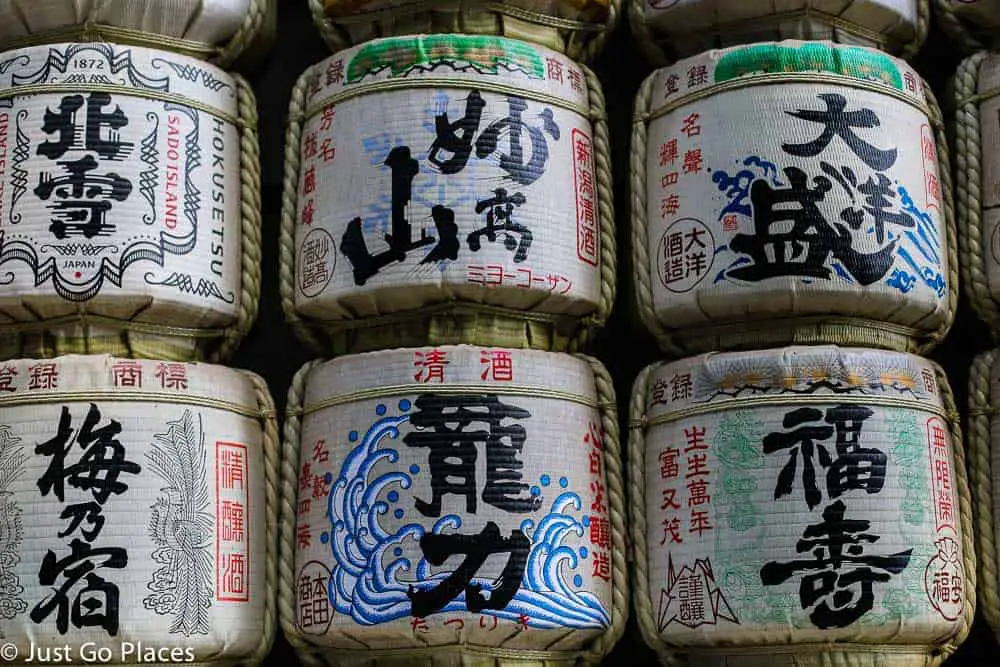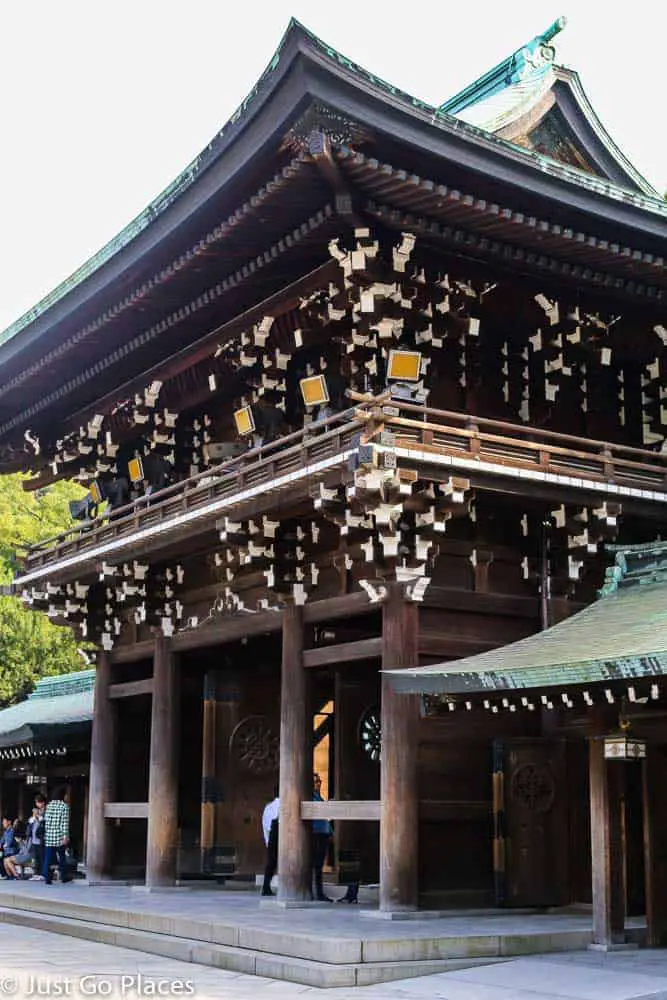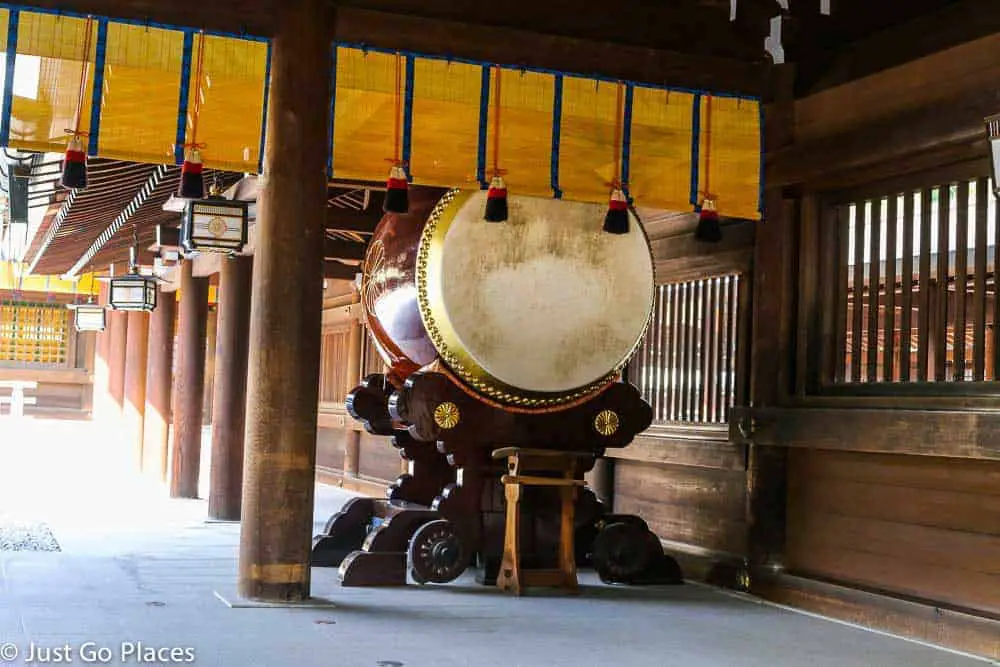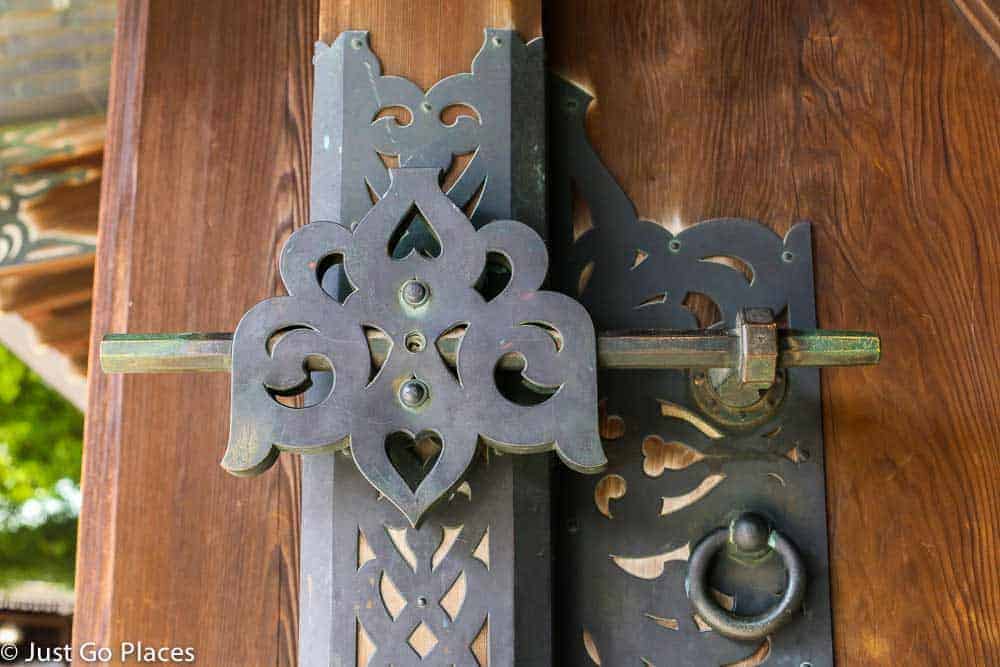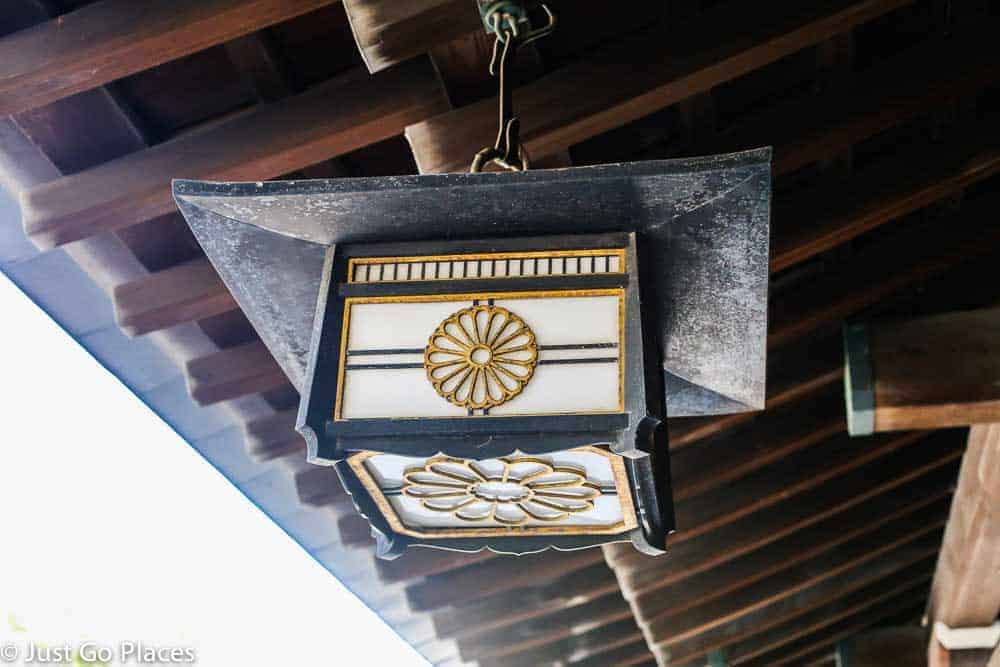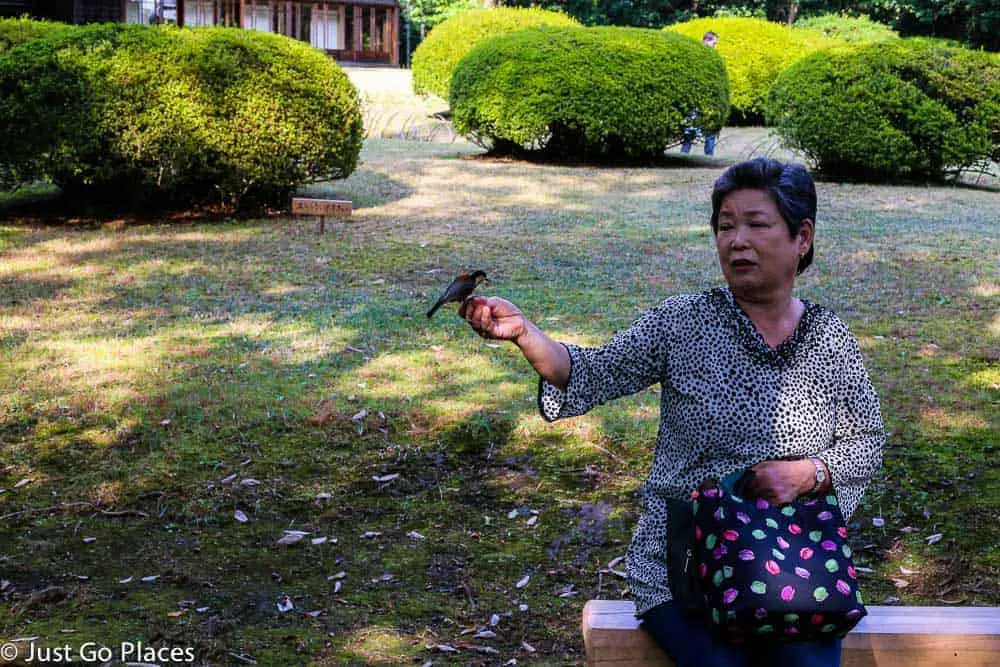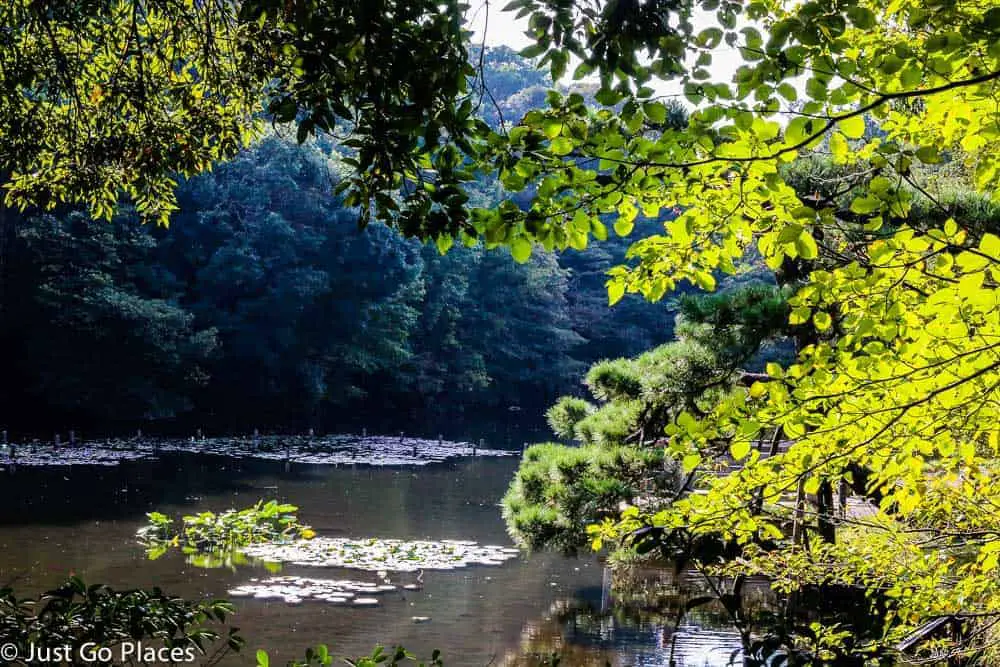Turning the corner onto a lane bordered by trees, we escaped the noise and heat of urban Tokyo into a tranquil oasis of green. The shade provide by the tall trees was also welcome relief from an unexpectedly warm day. It was hard to believe that the wide lane and the ginormous trees in Yoyogi park were only minutes away from some very posh and trendy neighbourhoods in Tokyo.
We were in Yoyogi park to visit the Meiji Shrine, one of the must-visit destinations in the city. Although very popular with both Japanese and international tourists, we did not feel overwhelmed by crowds at the Meiji Shrine. Perhaps both the tree-lined paths and the 40 foot high tori gates made from 1500 year old cedar tree trunks emphasise how very insignificant people really are.
Contents
The Meiji Shrine
The Meiji Shrine is dedicated to Emperor Meiji and his wife, Empress Shoken. Reigning from 1852-1912, Emperor Meiji took Japan out of the feudal ages and put it firmly on the international map as a world power. To this day, Japan’s emperors are the oldest continuous hereditary monarchs in the world. When Emperor Meiji took the throne, he was the 122nd Emperor of Japan.
Meiji means ‘enlightened rule’ which is how Emperor Meiji saw his period in history. Although it’s not entirely clear if Emperor Meiji did anything other than preside over the changes, he did allow an oligarchy to form which transitioned Japan into an industrial powerhouse and a modern power. Tokyo became the new capital under his rule and power shifted away from Kyoto.
Emperor Meiji lead the way in showing the Japanese how Japanese culture could work with Western imports. For example, he was a big fan of French wine but also wrote a lot of traditional Japanese poetry.
After Emperor Meiji’s death in 1912, the Japanese government decided to build a Shinto shrine to the deified souls of the Emperor and Empress. The Emperor’s body is buried in Kyoto though. The forest is made up of approximately 100,000 trees donated from all over Japan and planted by volunteers when the Shrine was built.
After World War II, in 1946 the Americans forced Emperor Meiji’s grandson, Emperor Hirohito, to proclaim that he was not a god as traditional Japanese belief had always held. Thanks, however, to the use of archaic language used, its not exactly clear what sort of divinity Hirohito was renouncing. The Japanese Imperial family have always held that they are descendants of the sun goddess (and top god), Ameterasu. The shrine to the deified souls of Emperor Meiji and his Empress, therefore, isn’t inconsistent with post-War history.
A Photo Gallery of the Meiji Shrine
The Imperial Gardens
Near the Shrine, the Imperial Gardens are a tranquil spot celebrating nature. My children enjoyed running along the small paths and watching very big koi swimming around a pond filled with lily pads. We found a Japanese woman who had managed to get the birds to eat peanuts from her hand. She tried to teach my kids to stand still so they could do the same but standing still and waiting for birds proved too hard for them.
The Imperial Gardens were in place before the Meiji Shrine was built. In fact, Emperor Meiji had the gardens built for the pleasure of his Empress. The Empress had a beautiful tea house on the grounds but it closed to the public. The Gardens are very famous for their iris displays in June with about 150 different varieties of irises blooming.
The Imperial Gardens has lots of little paths and places to sit and enjoy the gardens. We found it a nice area for some ‘downtime’ from the hustle and bustle that is the rest of Tokyo.
Visiting the Meiji Shrine
The Meiji Shrine is located conveniently next to the Harajuku JR station. There are no fees to enter. The shrine is open from sunrise to sunset every day of the year.
The Meiji Garden is likewise open daily. There is a small entrance fee and set hours.
***
SPREAD THE WORD! PIN THIS TO YOUR TRAVEL PINTEREST BOARDS FOR FUTURE REFERENCE!
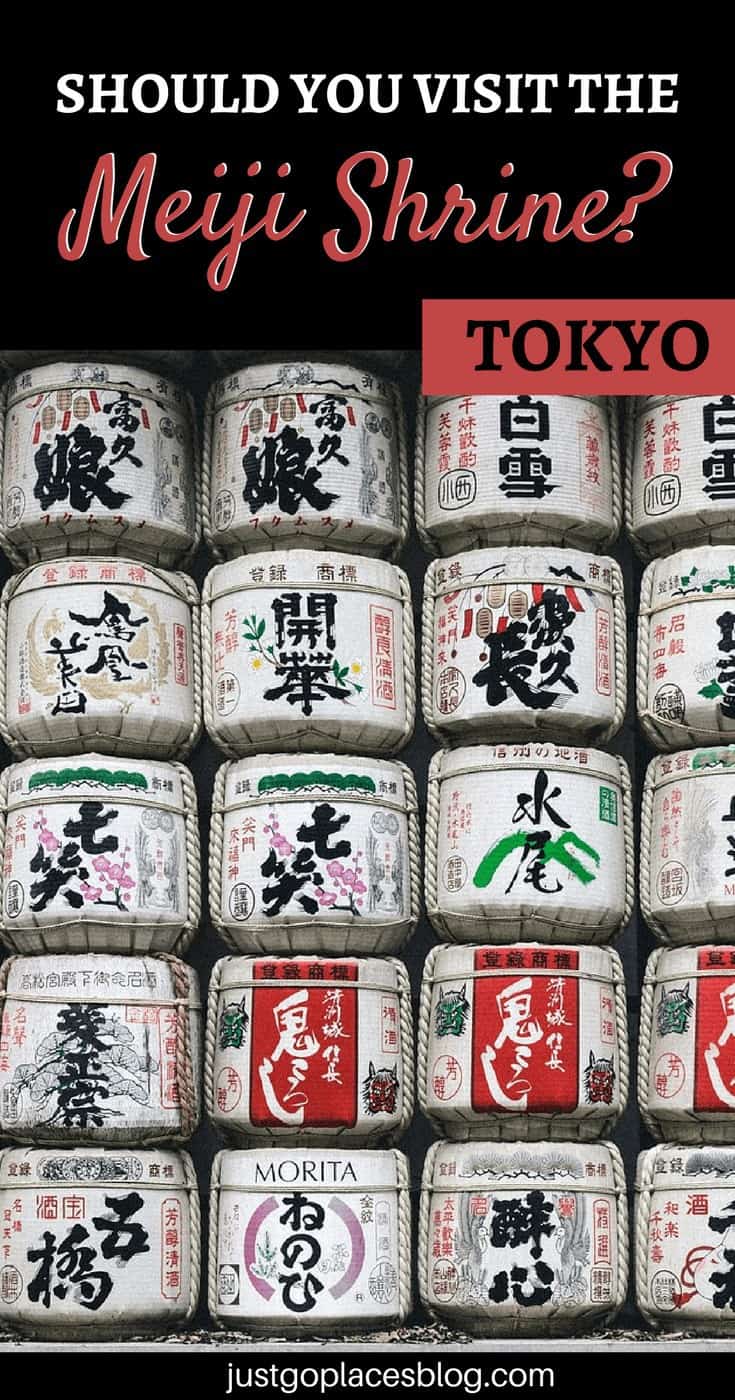
The Meiji Shrine, Tokyo is one of the must-visit destinations in the city. This temple
in Yoyogi Park should definitely be on your list of things to do in Tokyo as it’s
probably one of the best shrines in Japan and Tokyo. Discover why and plan your
Tokyo trip! #tokyo #japan #travelblog – @viajustgoplaces
This site generates income via partnerships with carefully-curated travel and lifestyle brands and/or purchases made through links to them at no extra cost to you. More information may be found on our Disclosure Policy.

